What If? (41 page)
Authors: Randall Munroe

Stirring Tea
Q.
I was absentmindedly stirring a cup of hot tea, when I got to thinking, “Aren’t I actually adding kinetic energy into this cup?” I know that stirring does help to cool down the tea, but what if I were to stir it faster? Would I be able to boil a cup of water by stirring?
—Will Evans
A.
No.
Th
e basic idea makes sense. Temperature is just kinetic energy. When you
stir tea, you’re adding kinetic energy to it, and that energy goes somewhere. Since the tea doesn’t do anything dramatic like rise into the air or emit light, the energy must be turning to heat.

Am I making tea wrong?
Th
e reason you don’t notice the heat is that you’re not adding very much of it. It takes a huge amount of energy to heat water; by volume, it has a greater heat capacity than any other common substance.
1
If you want to heat water from room temperature to nearly boiling in two minutes, you’ll need a lot of power:
2

Our formula tells us that if we want to make a cup of hot water in two minutes, we’ll need a 700-watt power source. A typical microwave uses 700 to 1100 watts, and it takes about two minutes to heat a mug of water to make tea. It’s nice when things work out!
3
Microwaving a cup of water for two minutes at 700 watts delivers an awful lot of energy to the water. When water falls
from the top of Niagara Falls, it gains kinetic energy, which is converted to heat at the bottom. But even after falling that great distance, the water heats up by only a fraction of a degree.
4
To boil a cup of water, you’d have to drop it from higher than the top of the atmosphere.
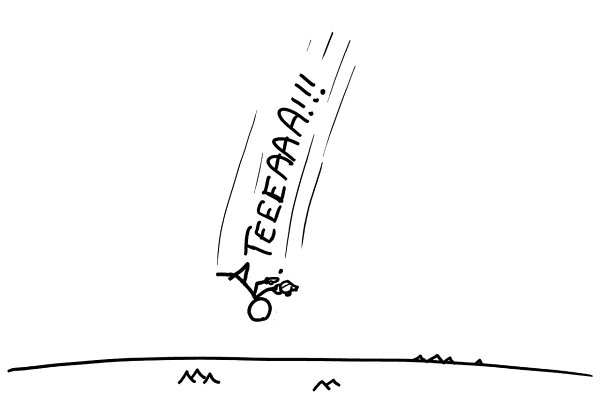
(
Th
e British Felix Baumgartner)
How does stirring compare to microwaving?
Based on figures from industrial mixer engineering reports, I estimate that vigorously stirring a cup of tea adds heat at a rate of about a ten-millionth of a watt.
Th
at’s completely negligible.
Th
e physical effect of stirring is actually a little complicated.
5
Most of the heat is carried away
from teacups by the air convecting over them, and so they cool from the top down. Stirring brings fresh hot water from the depths, so it can help this process. But there are other things going on
—
stirring disturbs the air, and it heats the walls of the mug. It’s hard to be sure what’s really going on without data.
Fortunately, we have the Internet. Stack Exchange user
drhodes
measured the
rate of teacup cooling from stirring vs. not stirring vs. repeatedly dipping a spoon into the cup vs. lifting it. Helpfully,
drhodes
posted both high-resolution graphs
and
the raw data itself, which is more than you can say for a lot of journal articles.
Th
e conclusion: It doesn’t really matter whether you stir, dip, or do nothing; the tea cools at about the same rate (although dipping the
spoon in and out of the tea cooled it slightly faster).
Which brings us back to the original question: Could you boil tea if you just stirred it hard enough?
No.
Th
e first problem is power.
Th
e amount of power in question, 700 watts, is about a horsepower, so if you want to boil tea in two minutes, you’ll need at least one horse to stir it hard enough.

You can reduce the power requirement by heating the tea over a longer period of time, but if you reduce it too far the tea will be cooling as fast as you’re heating it.
Even if you could churn the spoon hard enough
—
tens of thousands of stirs per second
—
fluid dynamics would get in the way. At those high speeds, the tea would cavitate; a vacuum would form along the path of the
spoon and stirring would become ineffective.
6
And if you stir hard enough that your tea cavitates, its surface area will increase very rapidly, and it will cool to room temperature in seconds.

No matter how hard you stir your tea, it’s not going to get any warmer.
- 1
Hydrogen and helium have a higher heat capacity by mass, but they’re diffuse gasses.
Th
e only other common substance with a higher heat capacity by mass is ammonia. All three of these lose to water when measured by volume.
- 2
Note: Pushing almost-boiling water
to boiling takes a large burst of extra energy on top of what’s required to heat it to the boiling point
—
this is called the enthalpy of vaporization.
- 3
If they didn’t, we’d just blame “inefficiency” or “vortices.”
- 5
In some situations, mixing liquids can actually help keep them warm. Hot water rises, and when a body of water is large and still enough (like the ocean), a warm layer forms on the surface.
Th
is warm layer radiates heat much more quickly than a cold layer would. If you disrupt this hot layer by mixing the water, the rate of heat loss decreases. - Th
is is why hurricanes tend to lose strength
if they stop moving forward
—
their waves churn up cold water from the depths, cutting them off from the thin layer of hot surface water that was their main source of energy.
- 6
Some blenders, which are enclosed, actually
do
manage to warm their contents this way. But what kind of person makes tea in a
blender
?
All the Lightning
Q.
If all the lightning strikes happening in the world on any given day all happened in the same place at once, what would happen to that place?
—Trevor Jones
A.
Th
ey say lightning never
strikes in the same place twice.
“
Th
ey” are wrong. From an evolutionary perspective, it’s a little surprising that this saying has survived; you’d think that people who believed
it would have been gradually filtered out of the living population.
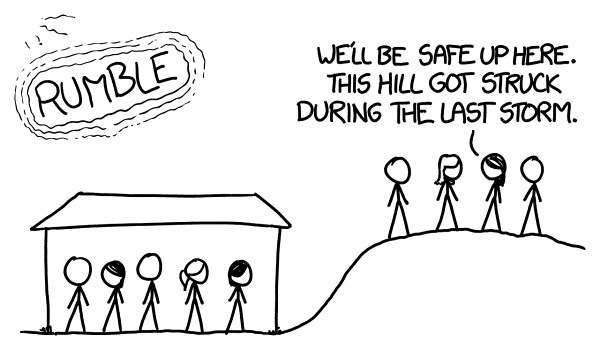
Th
is is how evolution works, right?
People often wonder whether we could harvest electrical power from lightning. On the face of it, it makes sense; after all, lightning is electricity,
1
and there is indeed a substantial amount of power in a lightning strike.
Th
e problem is, it’s hard to get lightning to strike where you want it.
2
A typical lightning strike delivers enough
energy to power a residential house for about two days.
Th
at means that even the Empire State Building, which is struck by lightning about 100 times a year, wouldn’t be able to keep a house running on lightning power alone.
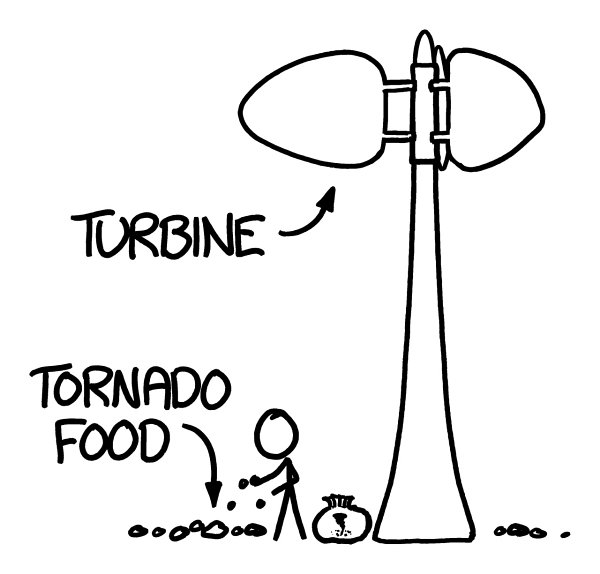
Even in regions of the world with a lot of lightning, such as Florida and the eastern Congo, the power delivered to the ground by sunlight outweighs the power delivered by lightning by a factor of a million. Generating power from lightning is like building a wind farm whose blades are turned by a tornado:
awesome
impractical.
3
Trevor’s lightning
In Trevor’s scenario, all
the lightning in the world hits in one place.
Th
is would make power generation a lot more attractive!
By “happened in the same place,” let’s assume the lightning bolts all come down in parallel, right up against each other.
Th
e main channel of a lightning bolt
—
the part that’s carrying current
—
is about a centimeter or two in diameter. Our bundle contains about a million separate bolts, which
means it will be about 6 meters in diameter.
Every science writer always compares everything to the atomic bomb dropped on Hiroshima,
4
so we may as well get that out of the way:
Th
e lightning bolt would deliver about two atomic bombs’ worth of energy to the air and ground. From a more practical standpoint, this is enough electricity to power a game console and plasma TV for several million
years. Or, to put it another way, it could support the US’s electricity consumption . . . for five minutes.
Th
e bolt itself would be only as narrow as the center circle of a basketball court, but it would leave a crater the size of the entire court.

Within the bolt, the air would turn to high-energy plasma.
Th
e light and heat from the bolt would spontaneously ignite surfaces for miles around.
Th
e shockwave would flatten trees and demolish buildings. All in all, the Hiroshima comparison is not far off.
Could we protect ourselves?
Lightning rods
Th
e mechanism by which lightning rods work is disputed. Some people
claim they actually ward off lightning strikes by “bleeding” charge from the ground to the air, lowering the cloud-to-ground voltage potential and reducing the probability of a strike.
Th
e National Fire Protection Association does not currently endorse this idea.
I’m not sure what the
NFPA
would say about Trevor’s massive lightning bolt, but a lightning rod wouldn’t protect you from it. A
copper cable a meter in diameter could, in theory, conduct the brief surge of current from the bolt without melting. Unfortunately, when the bolt reached the bottom end of the rod, the
ground
wouldn’t conduct it so well, and the explosion of molten rock would demolish your house all the same.
5
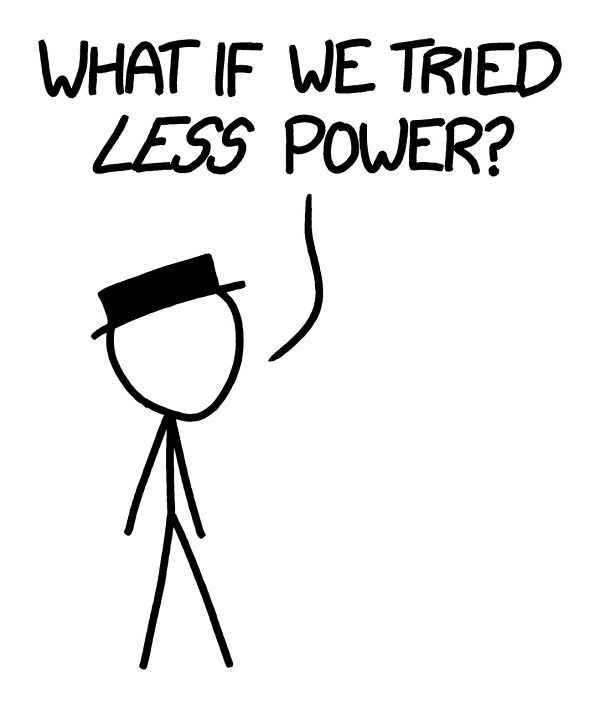
Catatumbo lightning
Collecting all the world’s lightning into one place is obviously impossible. What about gathering all the lightning from just one area?
No place on Earth has
constant
lightning, but there’s an area in Venezuela that comes close. Near the southwestern edge of Lake Maracaibo, there’s a strange phenomenon: perpetual nighttime thunderstorms.
Th
ere are two
spots, one over the lake and one over land to the west, where thunderstorms form almost every night.
Th
ese storms can generate a flash of lightning every two seconds, making Lake Maracaibo the lightning capital of the world.
If you somehow managed to channel all the bolts from a single night of Catatumbo thunderstorms down through a single lightning rod, and used it to charge a massive capacitor,
it would store up enough power to run a game console and plasma TV for roughly a century.
6
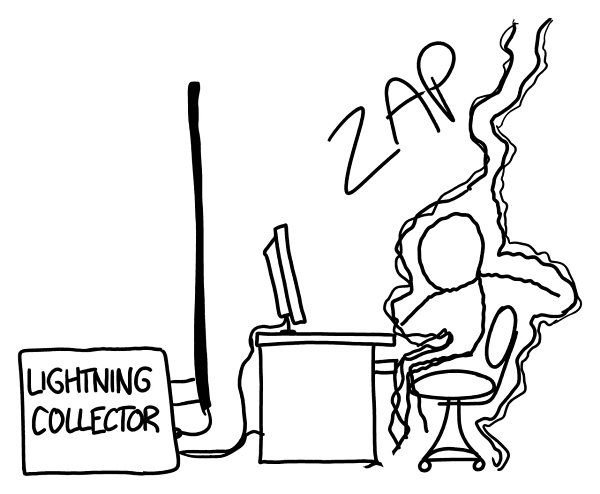
Of course, if this happened, the old saying would need even
more
revision.
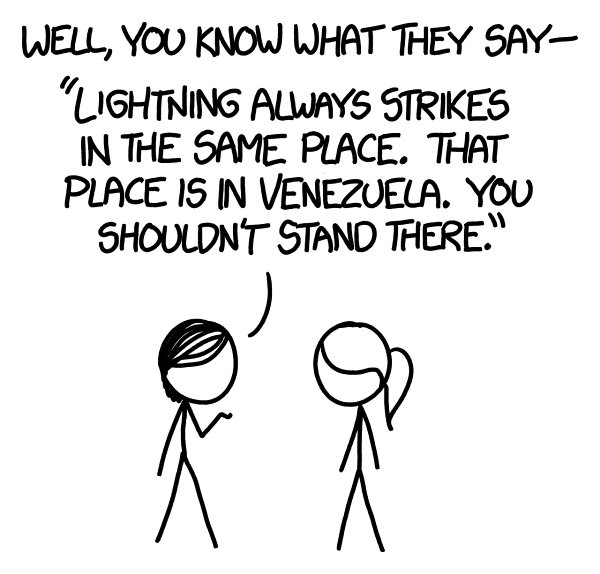
- 1
Citation:
Th
e presentation I gave to my third-grade class at Assawompset Elementary School while wearing a Ben Franklin costume.
- 2
And I hear it never strikes in the same place twice.
- 3
In case you’re curious, yes, I did run some numbers on using passing tornadoes to run wind turbines, and it’s even less
practical than gathering lightning.
Th
e average location in the heart of Tornado Alley has a tornado pass over it only every 4000 years. Even if you managed to absorb all the accumulated energy of the tornado, it would still result in less than a watt of average power output in the long run. Believe it or not, something like this idea has actually been attempted. A company called AVEtec has proposed
building a “vortex engine” that would produce artificial tornadoes and use them to generate power.
- 4
Niagara Falls has a power output equal to a Hiroshima-sized bomb going off
every eight hours
!
Th
e atomic bomb dropped on Nagasaki had an explosive power equal to
1.3 Hiroshima bombs
! For context, the gentle breeze blowing across a prairie
also
carries roughly the kinetic
energy of a Hiroshima bomb.
- 5
Your house would already be catching fire anyway, thanks to the thermal radiation from plasma in the air.
- 6
Since there’s no cellular data coverage on the southwest shore of Lake Maracaibo, you’ll have to buy service through a satellite provider, which generally means hundreds of milliseconds of lag.

